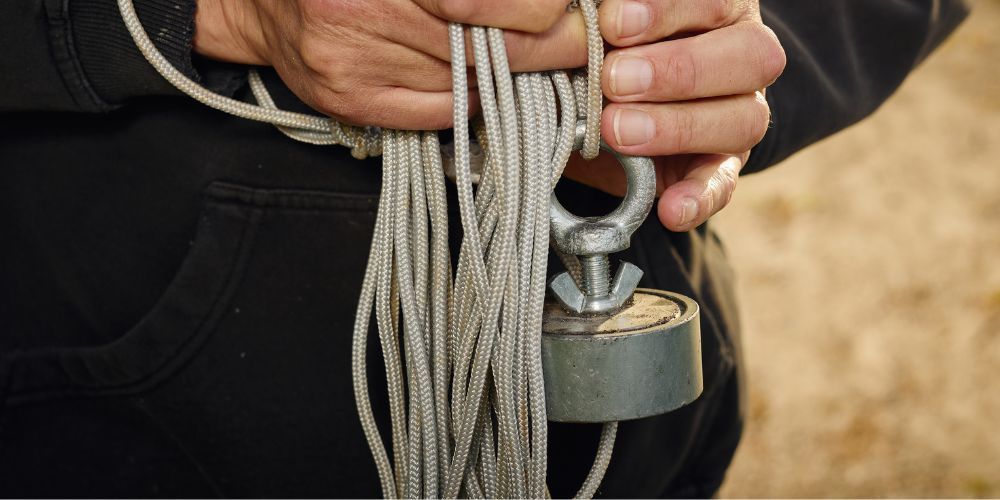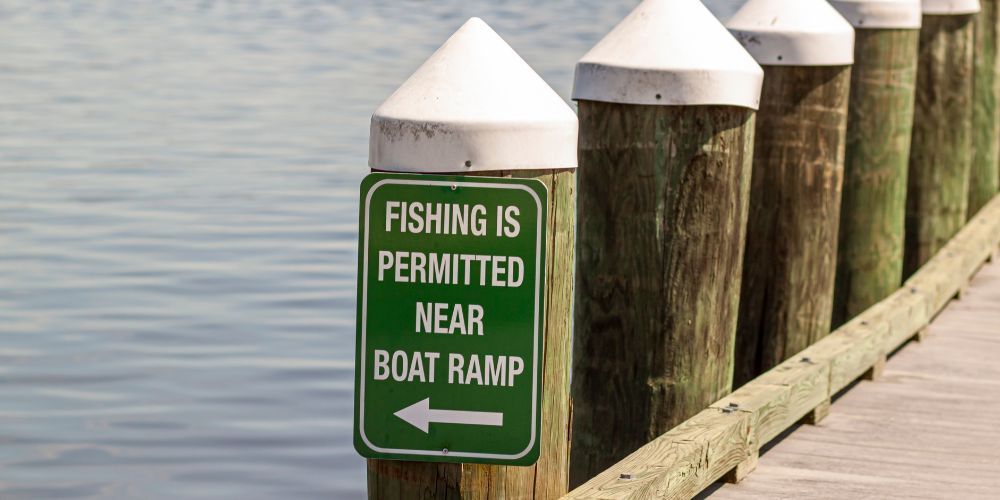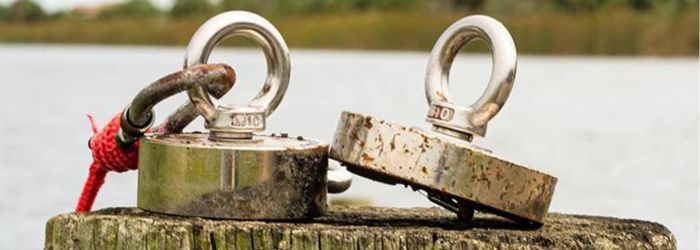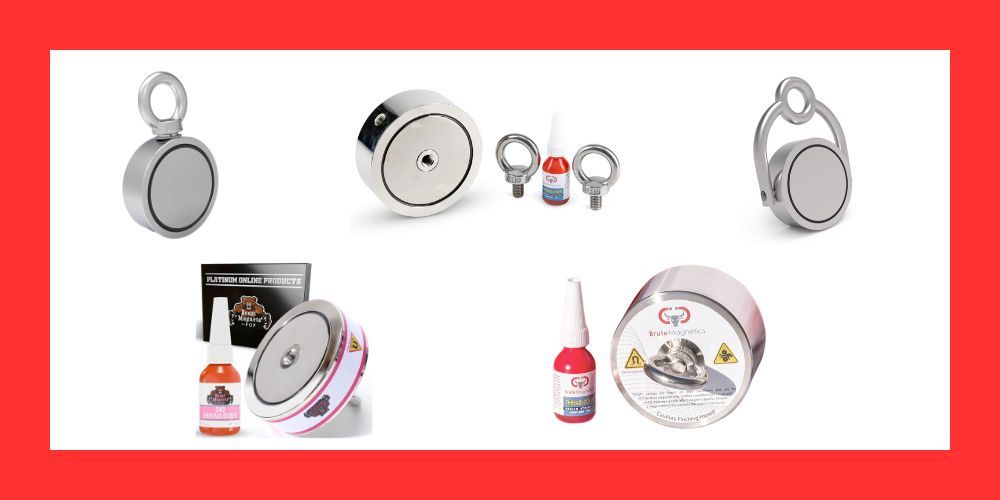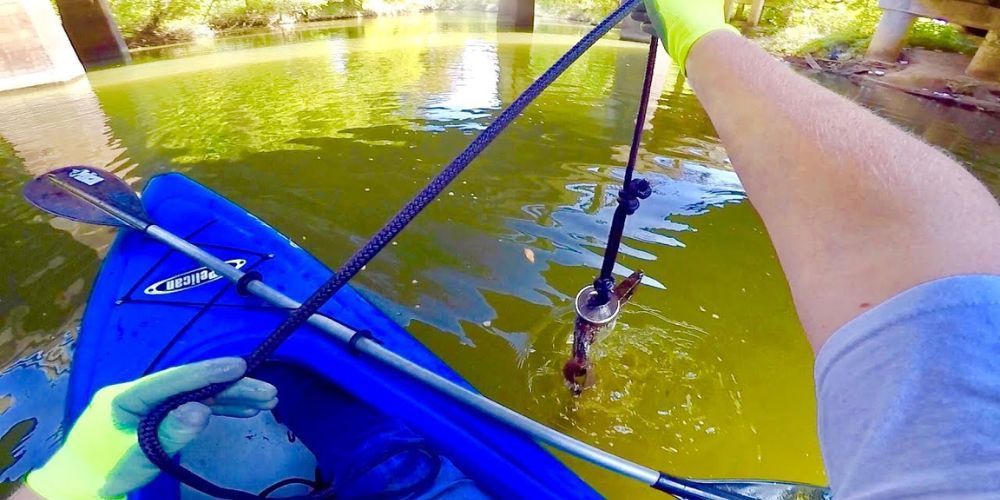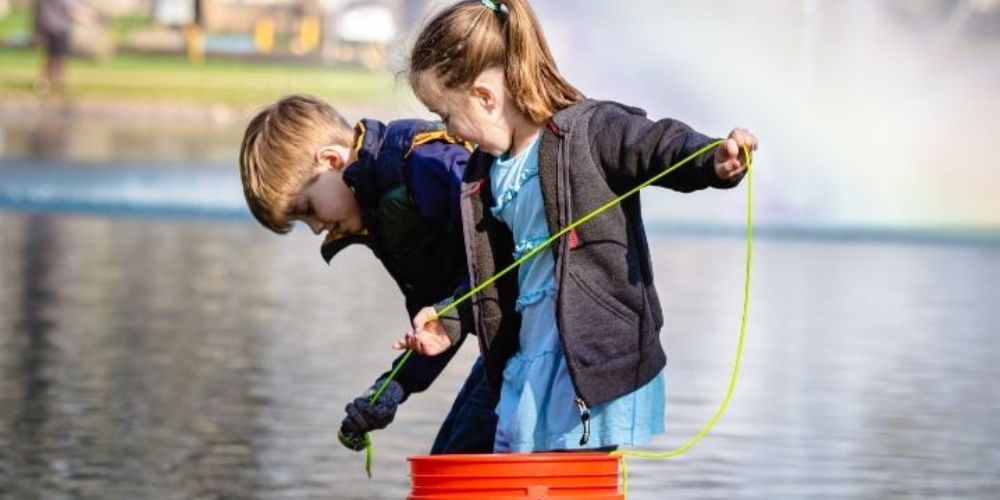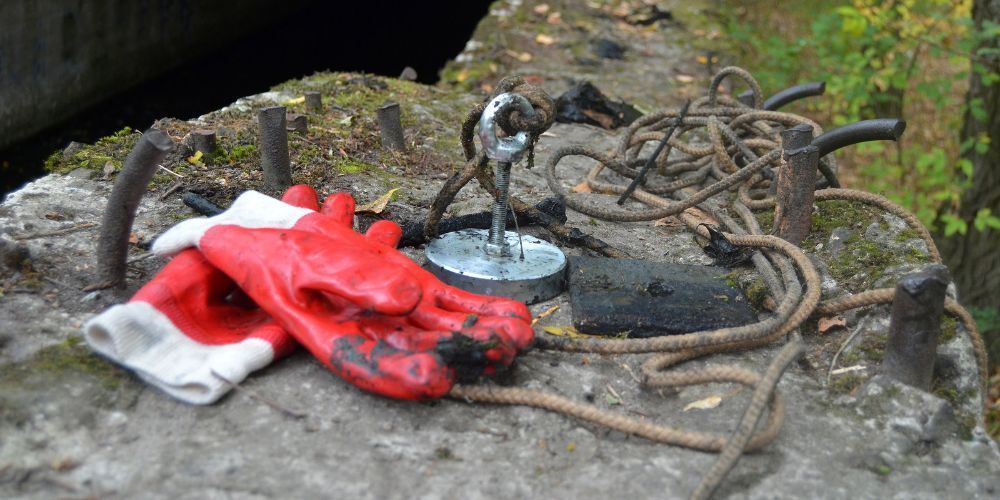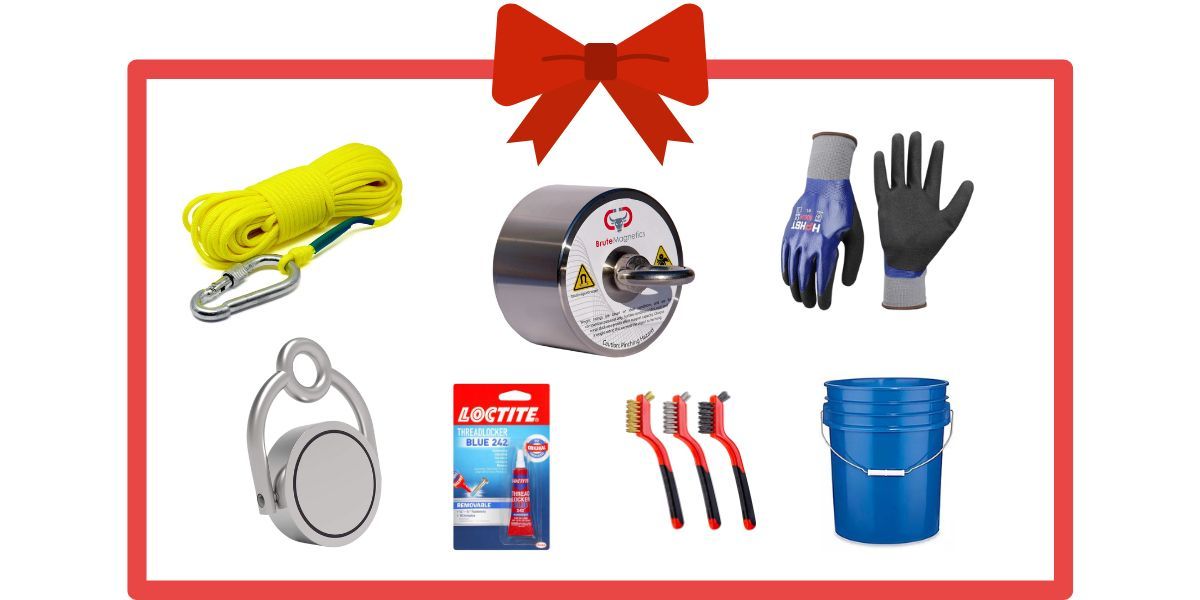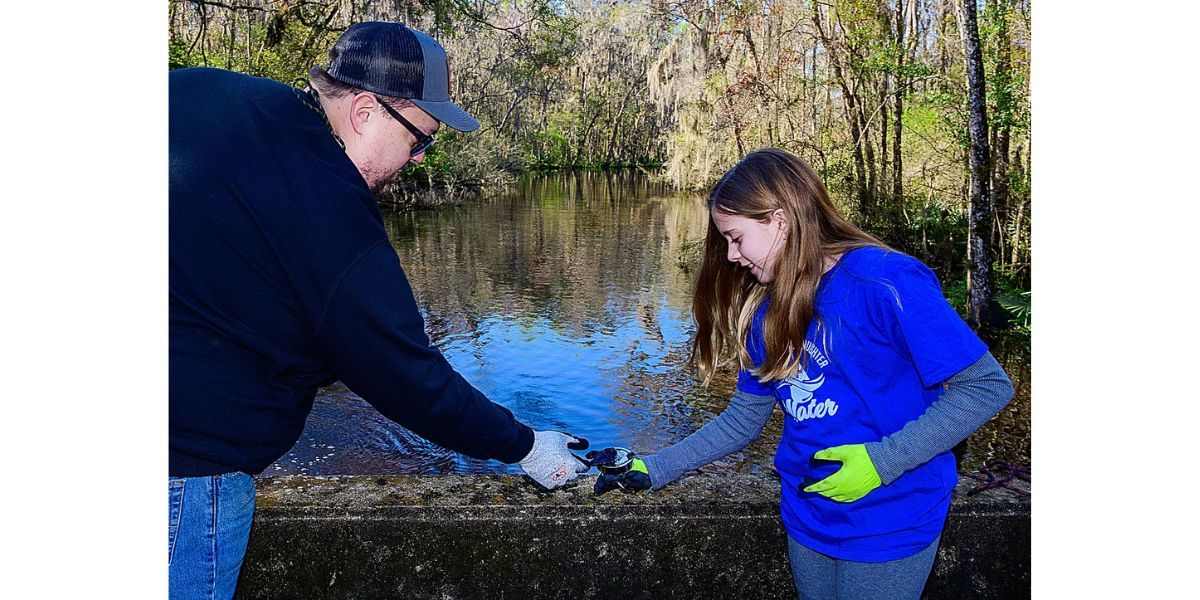10 Things I Wish I Knew When I Started Magnet Fishing
When you're just starting out with magnet fishing, knowing the essential techniques can vastly improve your success and enjoyment of this exciting hobby. The key lies not only in understanding how to search but also in using the right tools effectively. From robust neodymium magnets capable of pulling 500 pounds or more to heavy-duty gloves that shield you from potentially hazardous rusty metal items, having the right equipment is non-negotiable for both finding treasure and ensuring your safety.
Securing reliable gear isn't just about avoiding frustration; it's a critical step towards uncovering hidden finds beneath murky waters. Imagine lifting an old, history-laden relic from a riverbed—only possible because your magnet's strength didn’t falter when it counted most. With months dedicated to researching the best tools out there , these insights are designed to guide beginners on their first catches and beyond, leading smoothly into what equipment you'll need to kickstart your magnet fishing journey effectively and safely.
For beginners in magnet fishing, it's crucial to prepare adequately by ensuring you have the right gear, including a strong magnet, quality rope, and gloves for protection. Additionally, choose high-traffic locations near bodies of water where metal objects are more likely to be found, and practice various retrieval techniques like the 'hopping' method to maximize your chances of success.
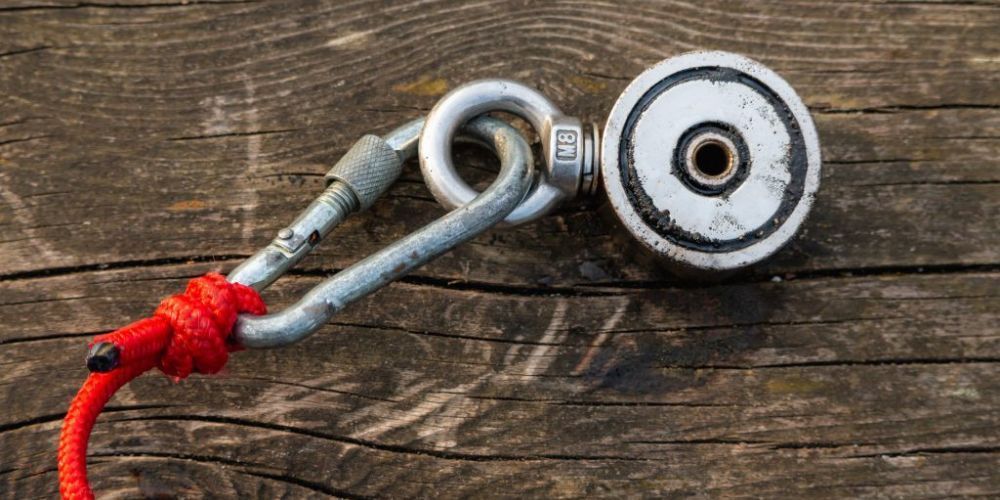
Essential Gear for Magnet Fishing
When embarking on a magnet fishing adventure, the right gear can make all the difference between a fun outing and a frustrating one. At the heart of this experience lies your magnet. To choose wisely, consider neodymium magnets, known for their incredible strength.
If you're just starting out, opting for a magnet with a pull force of 500 lbs is reasonable. However, if you’re feeling ambitious or plan to make larger finds, magnets boasting a pull force of 1200 lbs or more are favored by many enthusiasts since they open up possibilities for uncovering even heftier treasures buried underwater.
Just as important as the magnet itself are the protective items you’ll need to safeguard both your hands and your equipment.
Next up are protective gloves, which are absolutely essential in this hobby. A sturdy pair of heavy-duty gloves can save you a trip to the doctor—after all, the underwater environment often conceals rusty and sharp objects waiting to inflict injury. Puncture-resistant gloves are particularly recommended, as they offer an extra layer of protection against potential cuts from jagged metal pieces that could pose serious risks during retrieval.
Once you're safe and secure, think about how you’ll secure your finds from the depths below.
After ensuring your safety, focus on your rope—the lifeline that connects you to your magnet. It is crucial to select a rope with high tensile strength capable of handling the weight of significant finds. A length of 50 feet is typically sufficient for most locations, while a looped and sewn-end rope from brands like Brute Magnetics adds durability and stability, preventing annoying knots when you’re in the thick of things.
In addition, using a non-stretch rope will enhance your control during retrieval efforts.
However, some finds might be too large or heavy to pull directly with just a magnet and rope.
Finally, consider investing in some tools for retrieval. Items like carabiners and grappling hooks add versatility to your gear. While carabiners provide quick attachment points on-the-go for easily securing your magnet, grappling hooks become invaluable when dredging larger items from deep underwater. You’ll find that these tools allow you to maneuver effectively around submerged debris or large finds, giving you the edge needed to drag out even more substantial treasures safely.
With this essential gear at hand, you are now positioned to tackle the next step in your journey: selecting the right equipment tailored to your specific needs and preferences.
Choosing a Suitable Magnet
The process of choosing a suitable magnet can be compared to picking the right tool for a specific job—certain tasks simply require the right fit. An ideal magnet will not only efficiently retrieve objects but also withstand the harsh underwater conditions that come with magnet fishing. Think of it as preparing for an adventure: you wouldn’t set off without the proper equipment, so why would you approach this exciting hobby any differently?
Pulling Force
One major factor when selecting your magnet is its pulling force. This measurement indicates how much weight the magnet can safely lift, and it should align with the types of objects you intend to find.
If you're looking for smaller items like coins or fishing lures, a single-sided magnet with a pulling force around 500 lbs might be sufficient. However, if your goals include unearthing larger treasures such as bicycles or other metal debris, consider investing in a double-sided magnet capable of achieving 1200 lbs or more, effectively increasing your chances of finding valuable items.
To better visualize this, consider the following table:
| Magnet Type | Pulling Force | Suitable For |
|---|---|---|
| Single-sided magnet | 500 lbs | Small to medium objects |
| Double-sided magnet | 1200 lbs+ (combined) | Larger objects, increased chance of catching items |
| Cone-shaped magnet | 800-1000 lbs | Navigating rocky or uneven terrain |
Despite these pulling forces being impressive, using a magnet that's too strong for lighter finds may create frustrations due to the unnecessary hassle of managing heftier equipment on outings. Balance is key.
Alongside pulling force, durability is another paramount aspect to consider—this ensures your gear stands up to both time and nature.
Durability and Shape
When investing in a quality magnet, always check if it's coated to prevent rust and deterioration. A popular choice among seasoned magnet fishers is a nickel-copper-nickel coating. This coating enhances the strength of the magnet while guarding against corrosive effects from saltwater and freshwater alike.
Diving deeper into shapes, consider how they affect functionality. A cone-shaped magnet can expertly navigate through rocky or uneven terrain, making it easier to retrieve objects stuck in difficult spots. This adds versatility to your fishing endeavors; no longer are you limited to smooth surfaces alone.
Ultimately, consider the conditions under which you'll be fishing when determining the most suitable configuration for your needs. Opting for durability while remaining mindful of shapes provides peace of mind when focusing on what really matters—the thrill of discovering hidden treasures beneath the water’s surface!
As we move forward in our exploration of equipment, understanding durable materials and effective knots is crucial for enhancing your magnet fishing experience.
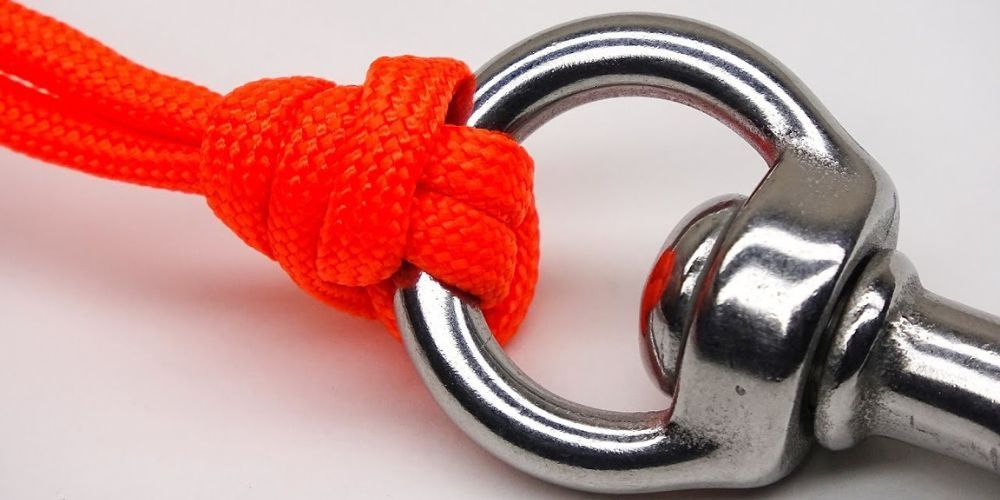
Durable Ropes and Knots
Strong ropes and proper knots are essential for keeping your magnet firmly attached while you're fishing. When selecting a rope, look for materials like nylon or polyester, which offer excellent durability and minimal stretch. These materials hold up well against wear and tear, ensuring that even when you're pulling heavier finds, your setup remains reliable. A rope that is too stretchy will absorb some of the pulling force, making it less effective at retrieving submerged items.
Types of Ropes
One of the best choices you can make is to select braided ropes with a high tensile strength, as they provide both strength and flexibility. For example, a ¼ inch braided nylon rope can handle pulling forces upwards of 1,500 lbs. This level of strength is crucial because when you're magnet fishing, you never know what you might encounter in the water; from rusty old tools to more substantial objects like bicycles or even small safes, having a robust technique is vital.
Always check the specifications of your rope before use to ensure that it matches your magnet's capabilities.
Knot Techniques
Knowledge of knot-tying is just as important as having a sturdy rope. Two techniques I recommend mastering are the Palomar knot and the figure-eight knot.
The Palomar knot is known for being straightforward to tie yet exceptionally strong once secured. It involves creating a loop with the rope, passing it through itself, and then pulling tight. This knot provides a secure hold against heavy loads without compromising the integrity of the rope.
On the other hand, the figure-eight knot is another excellent option; it's less likely to slip under pressure and allows for easy inspection to ensure it's tied correctly before you cast your line into the water. This knot begins similarly with forming a loop but includes an additional looping sequence that creates a distinctive figure-eight shape.
By integrating durable ropes and mastering these knot techniques, you set yourself up for successful finds while enhancing safety during your magnet fishing adventures. As we continue exploring this exciting hobby, let's turn our focus to precautions necessary for ensuring your safety while working on the water.
Safety Precautions on the Water
When you're out magnet fishing, safety should always be your top priority. The excitement of pulling treasures from the water can often overshadow potential hazards lurking around. Whether you find yourself by a stream, a river, or a lake, understanding how to keep yourself safe is crucial for a successful and enjoyable experience.
Essential Safety Tips
One of the first rules of safety is to wear a life jacket whenever you’re fishing from a boat or near deep water. A good life jacket provides critical buoyancy in case you accidentally slip in. Not only does it protect you, but it also offers peace of mind for everyone involved.
Imagine feeling that rush of cold water—having a life jacket could mean the difference between a frightening scare and a smooth rescue.
Additionally, always magnet fish with a buddy. There’s strength in numbers, and having someone alongside can be invaluable if an accident occurs. Picture this: you snag something heavy and lose your balance—your buddy can help steady you and make sure you don’t fall overboard.
It’s wise to keep a first aid kit readily accessible for minor injuries that might occur, like cuts from sharp metal objects or scrapes from rocky banks. You never know when an unexpected mishap may happen, so it’s smart to be prepared with adhesive bandages, antiseptic wipes, and any other necessary items. Having these supplies on hand can ensure that small accidents don't ruin an otherwise great day out.
Respecting the Environment
Equally important is respecting your surroundings. Avoid areas with strong currents or heavy boat traffic; these places can pose significant risks due to unpredictable water conditions. If fishing in weedy or congested spots, take care not to get entangled—both in debris and in potential hazards.
Furthermore, always stay informed about local laws and regulations regarding magnet fishing. Many locations have specific guidelines or prohibitions in place; adhering to these rules not only keeps you safe but also helps protect natural surroundings from being compromised.
Did you know that some areas prohibit magnet fishing due to historical preservation concerns? Unbeknownst to many enthusiasts, local governments may restrict access to certain sites where historical artifacts lie submerged as part of preserving culture and history.
Understanding these essential safety measures prepares you for the exciting possibilities ahead as you embark on your treasure-hunting journey in the water.
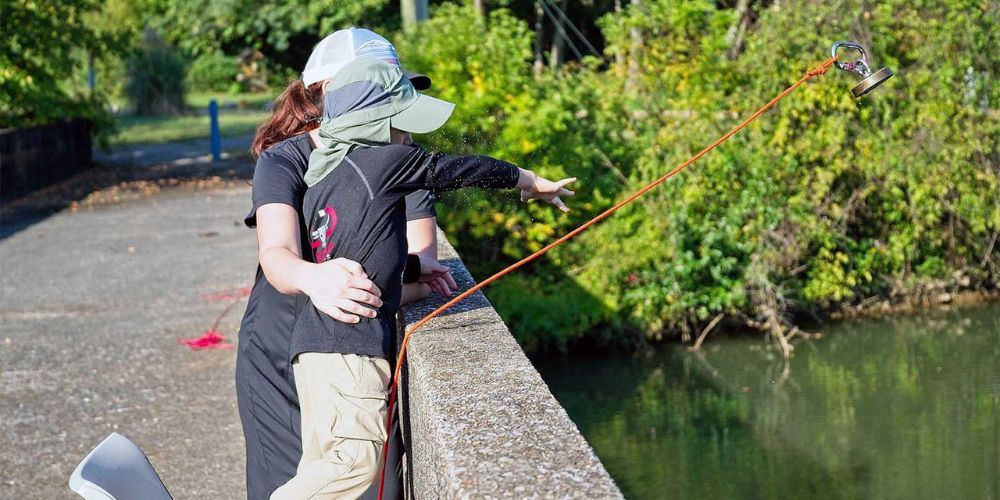
Effective Magnet Fishing Techniques
Beyond having the right gear, mastering your technique is crucial for a fruitful magnet fishing experience. The way you cast and retrieve can significantly impact what you find in the depths below, so it's worth paying attention to the nuances of each movement.
Casting and Retrieving
Start by casting your magnet close to you and gradually increase the distance with each throw. This approach allows you to familiarize yourself with how your magnet behaves in water while helping you develop a rhythm. As you reel in, use a slow and steady motion, maintaining tension on the rope without jerking it or moving too quickly. This smooth consistency will help you feel when you've snagged an object, making detection easier and more efficient. A good rule of thumb is to visualize your pull as if you're drawing something steadily from a pool—gentle yet deliberate.
Combining finesse with patience is the best strategy; however, there’s more than just casting to consider.
Using a Grid System
To cover the maximum area efficiently, implement a grid system when you’re magnet fishing. Imagine dividing your fishing area into sections, much like a chessboard, where each square represents an area that needs to be searched. This method ensures that you're systematic while optimizing your mapping efforts and minimizing redundancy. After casting in one section, gradually move to the next square, overlapping slightly with your previous cast for thorough coverage.
By following this structured approach, you create a methodical hunting ground where no spot goes unturned. Each subsequent cast feels like an opportunity rather than a random throw; this can significantly improve your chances of discovering something unique or valuable hidden beneath the surface.
Enhancing these core techniques fosters greater efficiency and methodical exploration; adding further skill sets will undoubtedly increase your yield.
Exploring Different Retrieval Techniques
Aside from basic casting and retrieving methods, experimenting with different retrieval techniques can yield better results. For instance, consider employing a "hopping" motion as you retrieve—this involves gently lifting the magnet off the bottom and letting it drop back down at intervals. This tactic may help disturb objects buried under sediment or debris that might otherwise go unnoticed.
Additionally, be attentive to variations in resistance during your retrieval process; different underwater textures—such as gravelly or mucky spots—can provide clues about what’s lying beneath. If you feel an unusual grip or pull on your magnet, take a moment to investigate before pulling too hard; this could lead to significant finds.
Mastering these retrieval techniques while maintaining the right mindset ensures that each fishing expedition is enjoyable and effective.
Effective magnet fishing boils down to refining your techniques over time through practice and thoughtful execution. With each outing, you'll gain insights into what works best for you and adapt accordingly for even greater success on future adventures.
As we continue our exploration into this rewarding hobby, understanding what treasures may lurk beneath the water's surface adds another layer of excitement to every cast.
What to Expect in Your Finds
Magnet fishing can be an exhilarating adventure, with the possibilities of unearthing both familiar and unexpected items. As you cast your magnet into the water, keep in mind that beneath the surface lies a hidden world brimming with stories waiting to be told. It’s somewhat like digging through a diverse historical timeline that has long been submerged.
Commonly Found Items
There are several items that magnet fishers frequently discover during their excursions. For instance, coins often find their way into waterways after being dropped or tossed by passersby. Parks and tourist areas near water bodies tend to yield these finds regularly.
Similarly, tools—such as wrenches and hammers—often slip from the hands of busy anglers or construction workers and end up at the bottom of lakes and rivers.
In my experience, one notable treasure was a rusted wrench I pulled up from a local river; it reminded me of the hardworking hands that had once held it.
You’ll also be surprised by how many old bicycles and scooters turn up during these fishing trips. Their disappearance often stems from accidents or playful skirmishes on docks and piers where fun meets misfortune.
Unusual Finds
The thrill of the unexpected includes unique artifacts that can make any fishing trip memorable. Rare finds could comprise historical relics like ancient weapons or medals hinting at past lives intertwined with your locale's history. Just imagine pulling out an ornate medal once worn by a veteran from a bygone era or even a medieval dagger encrusted with mud.
One particularly thrilling tale involves someone pulling a World War II grenade from the depths near an old bridge. While it sounds like something out of a movie, such bold discoveries remind us of history lurking beneath our feet, waiting for curious adventurers to unveil its secrets.
The excitement lies not just in the potential monetary value but in the stories behind each object—every old coin and rusted tool speaks volumes about human experiences and forgotten tales.
While we relish these discoveries, it’s vital to approach handling every find with care and respect, ensuring we preserve these fragments of history for future enthusiasts to explore further. Transitioning now, we can explore practical advice to enhance your journey as you embark on this captivating hobby.
Beginner Tips for Success
Starting out in magnet fishing can feel overwhelming, especially when faced with the variety of approaches taken by seasoned anglers. However, following some basic tips will help you navigate these waters more confidently and successfully. One of the most effective strategies is to begin in high-traffic areas where the likelihood of interesting finds increases dramatically. Locations like piers, docks, and popular fishing spots are teeming with potential treasures. The reason behind this? High foot traffic often translates into a greater chance of lost items finding their way to the water, giving you a compelling context for your expeditions.
Moving beyond location, let’s discuss the importance of equipment in your magnet fishing quest.
Equip yourself with a strong magnet; this is non-negotiable. A magnet with substantial pulling power ensures that you can retrieve heavier and more interesting objects from the depths below. When considering your first magnet purchase, aim for one capable of at least 500 pounds of pulling force. This kind of strength allows you to access hidden gems that lurk beneath murky waters or caught between submerged rocks. Remember, investing in quality gear amplifies your finds and enhances safety during your excursions.
Keeping track of your locations will further optimize your efforts.
Another invaluable tip is to record your spots. By maintaining a log of where you've fished and what you've found—including details about the types of items retrieved and locations visited—you'll develop a treasure map over time. This practice illuminates which areas yield better results and enhances your chances of future successes. It’s fascinating to see patterns emerge—certain locations may consistently offer unique artifacts while others remain disappointing. Documenting your adventures turns the learning process into a personal archive of discoveries.
Lastly, it’s crucial to cultivate an attitude that embraces both patience and persistence.
Magnet fishing is not only about casting your magnet into the water but waiting patiently for that rewarding pull. Understanding that not every cast will yield an impressive find is part of the journey. It requires a peaceful mindset where patience becomes your ally. Sometimes you'll swing that magnet through the water repeatedly without any response—but don't be discouraged! Every effort counts, and learning how to read various underwater terrains will ultimately pay off in dividends as you gain experience.
With these foundational techniques in mind, you are well-prepared to take your adventures further while ensuring that your gear remains in top condition for future outings.
Maintaining Your Fishing Equipment
Proper maintenance extends the life of your gear, making a significant difference between a successful trip and disappointing results. By consciously taking care of your tools, you're investing in future adventures.
Let's focus on maintaining your fishing equipment, starting with cleaning and storing.
Cleaning and Storing
After every fishing trip, it’s essential to rinse your magnet and rope with fresh water to remove residues like mud, silt, or rust. This effective step preserves the integrity of your equipment and maximizes performance for your next outing. Thorough drying is just as important; leaving moisture behind can encourage rust on the metal components and promote mildew on the fibers of your rope. Using a soft cloth or towel to wipe everything down works wonders!
Think of cleaning your gear as giving it a “spa day.” Just like we feel revitalized after a good wash, so does our equipment when cared for properly.
Proper storage is crucial as well since how you store your tools directly affects their longevity.
Storage Tips
Store your magnet in a dry place away from direct sunlight and extreme temperatures. Keep it away from electronics too; magnets can demagnetize sensitive devices. One useful suggestion is to use a designated, moisture-resistant bag or container specifically for your magnet.
For ropes, it’s best to keep them coiled neatly and hung up if possible or placed in a dry container to prevent crushing or tangling. This method reduces wear and tear on the fibers and keeps your gear organized for easy access during your next adventure.
Investing time into regular maintenance benefits both you and your gear, ensuring every fishing trip goes smoothly without preventable mishaps. By respecting nature through responsible fishing habits, you'll enjoy more productive outings while safeguarding your equipment's lifespan.
In summary, proper cleaning and storage are fundamental to extending the life of your fishing gear for many future adventures ahead.
What type of magnet should I use for magnet fishing?
When starting out in magnet fishing, choosing the right magnet is crucial. Beginners often opt for a double-sided neodymium magnet because it offers a good balance of pulling power and ease of use. A pulling force of 500-800 lbs is typically sufficient for most finds. It’s essential to consider the environment you’ll be fishing in—rivers, lakes, or urban canals—and adjust your magnet’s strength accordingly. Stronger magnets can pull in heavier items, but they may also get stuck more easily on underwater debris, so a balance is key.
What safety precautions should I take while magnet fishing?
Safety should always be your top priority in magnet fishing. Start by wearing protective gloves to avoid cuts from sharp objects and prevent contact with rust. Always be aware of your surroundings, especially near water, to prevent slips or falls. If you’re magnet fishing from a boat or bridge, a secure attachment to the magnet rope is critical to avoid losing your magnet. Additionally, it’s wise to inform someone of your location, especially when fishing in remote areas. Keep a first-aid kit handy, as well as tools to help detach your magnet if it gets stuck.
How do I clean and maintain my magnet fishing gear?
Proper maintenance of your magnet fishing gear ensures longevity and efficiency. After each outing, rinse your magnet with fresh water to remove any dirt or rust particles. If your magnet has been exposed to saltwater, it’s crucial to clean it thoroughly to prevent corrosion. Dry it completely before storing it to avoid rust buildup. Periodically inspect the magnet and rope for signs of wear or damage. Replacing the rope if it starts fraying can prevent accidents during your fishing trips. Storing your magnet in a dry, cool place also helps maintain its strength and integrity.
Author: Will Flaiz


